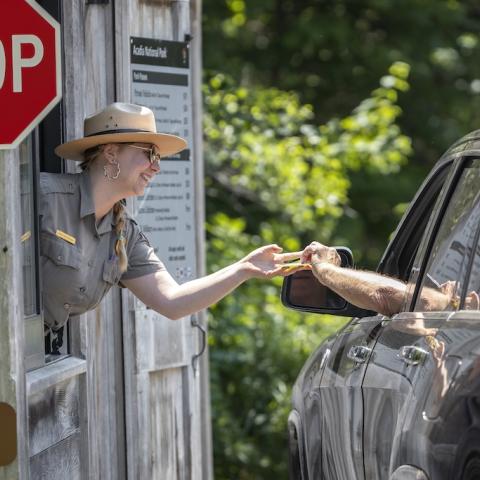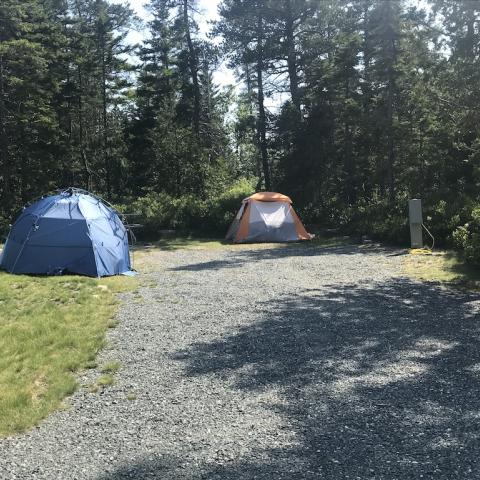
Tucked away in legislation to rename Bandelier National Monument as Bandelier National Park and Preserve is a provision that would open 4,000 acres of Bandelier to hunting/NPS, Sally King
If you're paying attention, the press release touting the effort of U.S. Martin Heinrich of New Mexico to rebrand Bandelier National Monument as a national park sounds noble. It's what he's not publicly promoting in that legislation that you should to pay attention to.
"When I talk to people about what makes New Mexico unique, it always comes back to our breathtaking landscapes, our deep and complex history, and our unique cultures. Bandelier National Monument encapsulates each of these in unrivaled ways. It’s long past time that we recognize that Bandelier’s historical and natural resources are more than worthy of national park status,” said Sen. Heinrich back in November when he launched the effort.
"This is, after all, a living cultural landscape. Bandelier’s mesas and canyons have human history that dates back more than 10,000 years. The ancestral sites in Bandelier continue to hold deep cultural and religious significance to the pueblos. Upgrading Bandelier to national park status is the best way to ensure these cultural treasures and northern New Mexico’s history and natural beauty receive the recognition and permanent protection they have long deserved."
Certainly, provisions in the proposed legislation that call for input from Native American cultures that have connections with Bandelier's landscape are admirable.
"Senator Heinrich’s legislation ensures that the traditional and historical knowledge of Zuni and other pueblos is reflected in the management of this sacred cultural landscape,” Governor of Zuni Pueblo Val Panteah said when the legislation to rename Bandelier as a "national park and preserve" was initiated.
What wasn't mentioned in the senator's news release was that the proposed legislation would open 4,000 acres of the not-quite 33,700-acre Bandelier to hunting. And that raises the question of how much hunting in the monument factored into the senator's legislation? After all, he could have accomplished the renaming goal without carving out a 4,000-acre hunting grounds.
"There has been an effort over the last five years or so by some in the hunting community to try and get hunting started in Bandelier National Monument. Right now the monument is a roughly 34,000-acre park, and it has no hunting or trapping allowed," said Tom Ribe, executive director of Caldera Action, a nonprofit advocacy group in New Mexico opposed to the current rebranding effort.
"Yet there's been some pressure over the last few years to open the park up to hunting," Ribe went on. "This is something that Sen. Heinrich is interested in because he himself is a hunter and has a lot of ties to organizations that promote hunting."
There are, according to an article in New Mexico Magazine, between 70,000 and 90,000 Rocky Mountain elk in the state, elk, incidentally, that are descended from some introduced back in 1910 from Yellowstone National Park. Another influx of elk came to Bandelier and the Jemez Mountains in the 1960s from Rocky Mountain National Park, the National Park Service notes.
Bandelier's cultural significance certainly is notable, and in and of itself possibly enough to justify renaming the monument. But to tack on a 4,000-acre "preserve" open for elk and mule deer hunting not only brings the senator's motives into question but also would be a stain on the renamed park if the legislation succeeds.
The national park movement was not built to promote hunting, but rather on preserving these natural and cultural resources for future generations to enjoy.
That Bandelier is surrounded on three sides by the Sante Fe National Forest, which proclaims itself as "home to some of the best big game trophies in the country," also begs the question of why the national monument needs to be opened to hunting.
Traveler postscript: Listen to my entire interview with Tom Ribe on National Parks Traveler Episode 54: Colorado River Economics, Rebranding Bandelier National Monument. Also, if you're concerned about hunting in national park units, keep an eye on efforts to rename New River Gorge National River in West Virginia as a "national park and preserve."

Employee housing at Rocky Mountain National Park/NPS
Employee Housing
It was welcome news that the Interior Department had agreed that employees at Yellowstone National Park needed housing assistance. The tens of millions of dollars (the exact amount hasn't been determined) that will be spent to upgrade housing for year-round and seasonal park employees will, as Yellowstone Superintendent Cam Sholly pointed out, help attract and retain good employees.
"Good talent won’t come to places that have poor housing," he told me a week ago.
But Yellowstone isn't alone in needing quality housing for workers, let alone housing, period. Both Voyageurs National Park and Indiana Dunes National Park earlier this year issued calls for housing for seasonal workers.
"Summer employees often have difficulty in finding suitable short-term housing. Most of the employees are college students or people just starting their careers and have limited budgets. Many apartments will not lease or rent for less than six months or a year and the park's summer employees typically work less than that starting in May," read a release from Indiana Dunes.
At Voyageurs, meanwhile, their release said the park "seeks to lease an apartment unit or small home in the International Falls commuting area to accommodate a minimum of 2-4 summer staff. The total number of staff in the unit will be determined by number of bedrooms and square footage of the proposed unit."
Certainly, other parks around the country also are struggling to find suitable housing for their employees. At Acadia National Park in Maine, for example, the Park Service has been gauging interest from the private sector regarding a private-public partnership to build housing for seasonal employees.
And last year The Pew Charitable Trust's Restore America's Parks staff noted the often-deplorable conditions park employees face when it comes to housing.
Years of unreliable congressional funding have left NPS budgets pinched and park managers without the proper funds to keep up with maintenance needs. With limited funds, managers often must make tough choices. As a result, other park repairs are often prioritized over employee housing. According to NPS, deferred maintenance for employee housing totaled more than $186 million in fiscal year 2018. Compare that with the $2.2 million NPS received that year for its Housing Improvement Program. With such inadequate yearly funding, it’s no surprise the problem continues to grow.
Will Interior commit more millions of dollars to help them out, too? I'm told employee housing across the park system is a priority. But how great of a priority remains to be seen.
P. Daniel Smith's Job
The National Park Service continues to dodge questions about how a formerly retired federal employee who was brought back in January 2018 as a political appointee at the top of the National Park Service landed in a $165,000-a-year-position created last fall.
While Interior Secretary David Bernhardt announced last September that the 73-year-old P. Daniel Smith, who has had a checkered career (three Office of Inspector General investigations, one that found he circumvented environmental regulations and acted counter to National Park Service policies), it wasn't until nearly three weeks later, on October 18, that the job -- Commemorations Specialist -- was posted, and then for just a week. And, interestingly, the announcement said the job would be based in Cary, North Carolina, where there is no Park Service office; but that is where Smith lives.
"Dan Smith’s hiring as national commemorations coordinator was accomplished according to standard personnel practices," acting Park Service spokesperson Mike Litterest told me last week when I asked about the curious hiring of Smith. "We understand an inquiry into his hiring has been forwarded to the Inspector General’s office; we await their response."
That inquiry came from Public Employees for Environmental Responsibility, which has asked the Inspector General to investigate Smith's working arrangement.
Litterest would not say whether anyone else applied for the job, which is to serve as the Park Service's liason concerning the 250th anniversary of the United States' birth and with the Southern Campaign of the Revolutionary War. Nor would he say why the job was to be based in Cary, despite the job description stating that the position's duties required "frequent briefings and meetings ... often (including) representatives from the Department of the Interior and other agencies, the Office of Management and Budget, White House Council on Environmental Quality and members of Congress."
How much in travel and per diem is the Park Service paying for Smith to travel back and forth from Cary to Washington, D.C.?
Meanwhile, the U.S. Semiquincentennial Commission has pointed to Independence National Historical Park Superintendent Cynthia MacLeod as the "National Park Service representative to the Commission."
Is Interior paying two people to do the same job? The Park Service has declined to set up an interview with Smith.




 Support Essential Coverage of Essential Places
Support Essential Coverage of Essential Places







Add comment